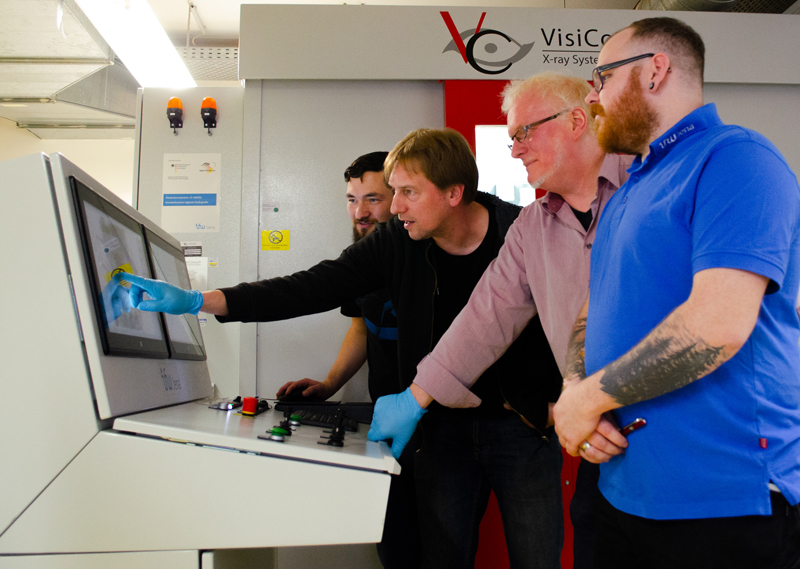Archaeology in the materials testing lab

This week, however, there was a completely different test order: Rüdiger Lehnert and Stephan Patscher from the Roman-Germanic Central Museum in Mainz, Leibniz Research Institute for Archaeology, wanted to examine centuries-old findings. The findings came from graves in Spoleto in Italy and Budinjak in Croatia, some of which date from the 7th century B.C. The pieces have decayed, broken and corroded over time, so it is not always clear what they are. The two restorers from Mainz now wanted to find out more about them in the materials testing laboratory of ifw Jena. For this reason, the found objects were subjected to various non-destructive tests. Under the stereomicroscope and the scanning electron microscope, information about the surface condition and chemical composition of the parts could be obtained. In the digital radiography plants at ifw Jena, three-dimensional images of the interior were produced, which provided valuable information on the construction and nature of the grave findings.
"The inspection of archaeological pieces that have been buried for centuries is a special task for our institute," says Maik Anders, materials tester at ifw Jena. "We have to be very sensitive with the findings so as not to damage them. Great care must be taken when fixing the parts in the plants."
Rüdiger Lehnert and Stephan Patscher look forward to further cooperation with ifw Jena. "The first results are very satisfactory. Thanks to the modern test methods we were able to clarify all of our open questions", says Lehnert. "The systems at ifw Jena offer us completely new possibilities."


